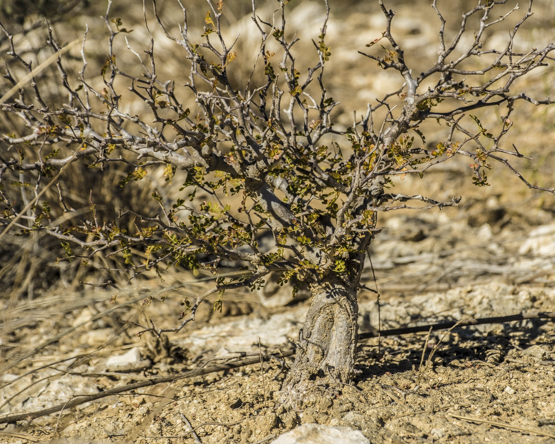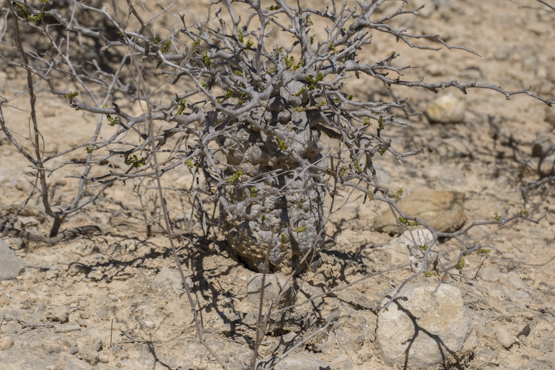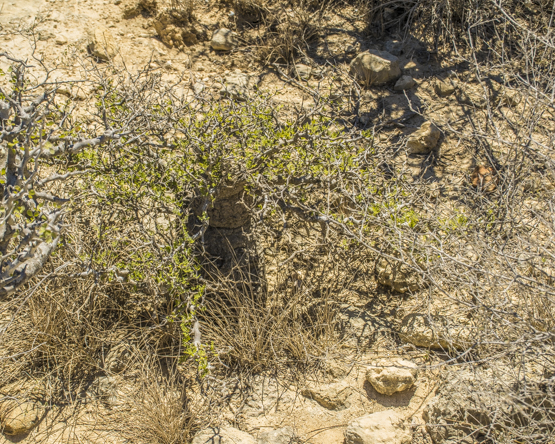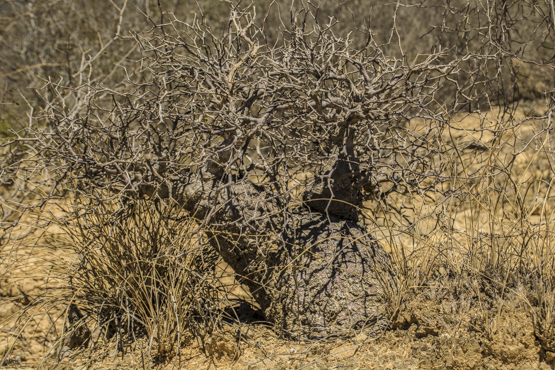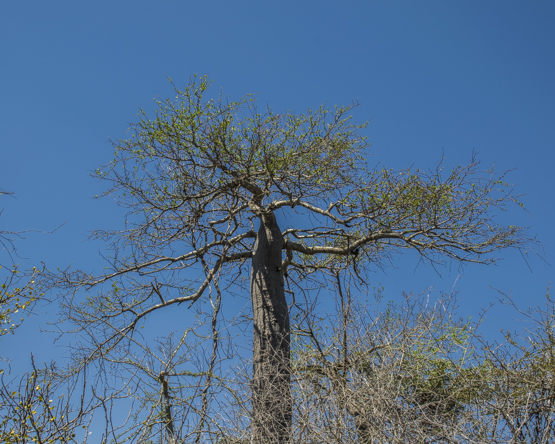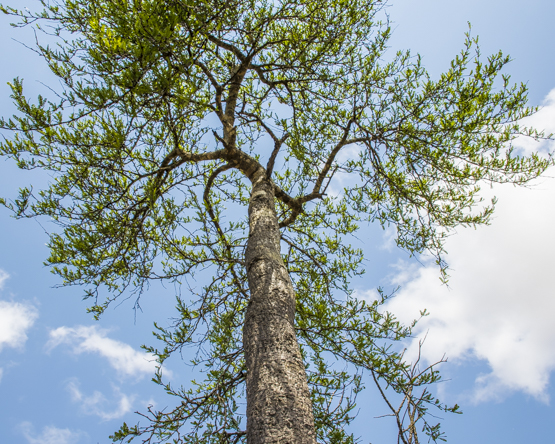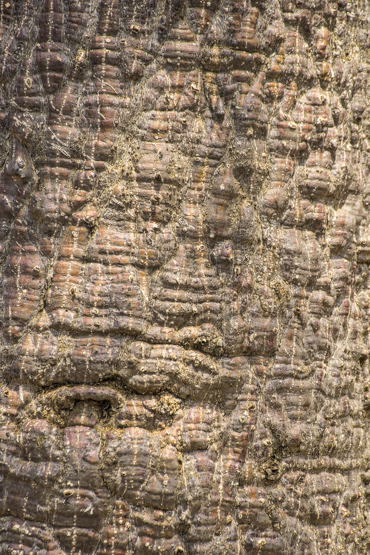Here the trunk is only to about 1 m tall and to 50 cm in diameter, conical to irregularly pyramidal, with silver-grey bark.
The branches are hairless, often strongly zig-zag and frequently terminating in a sharp spine; the leaves are 1.5-3.6 cm long with 3-4 (sometimes 5) pairs of leaflets which sometimes touch each other.
The flowers are yellowish-green.
The species has a limited distribution around Toliara, at altitudes from sea level to 500 m, growing in dry thickets on limestone. It is known from only 5 localities and considered endangered. This situation is exacerbated by collection of wild plants.
This species was only described in 1995 and before that time was usually misnamed O. decaryi.
